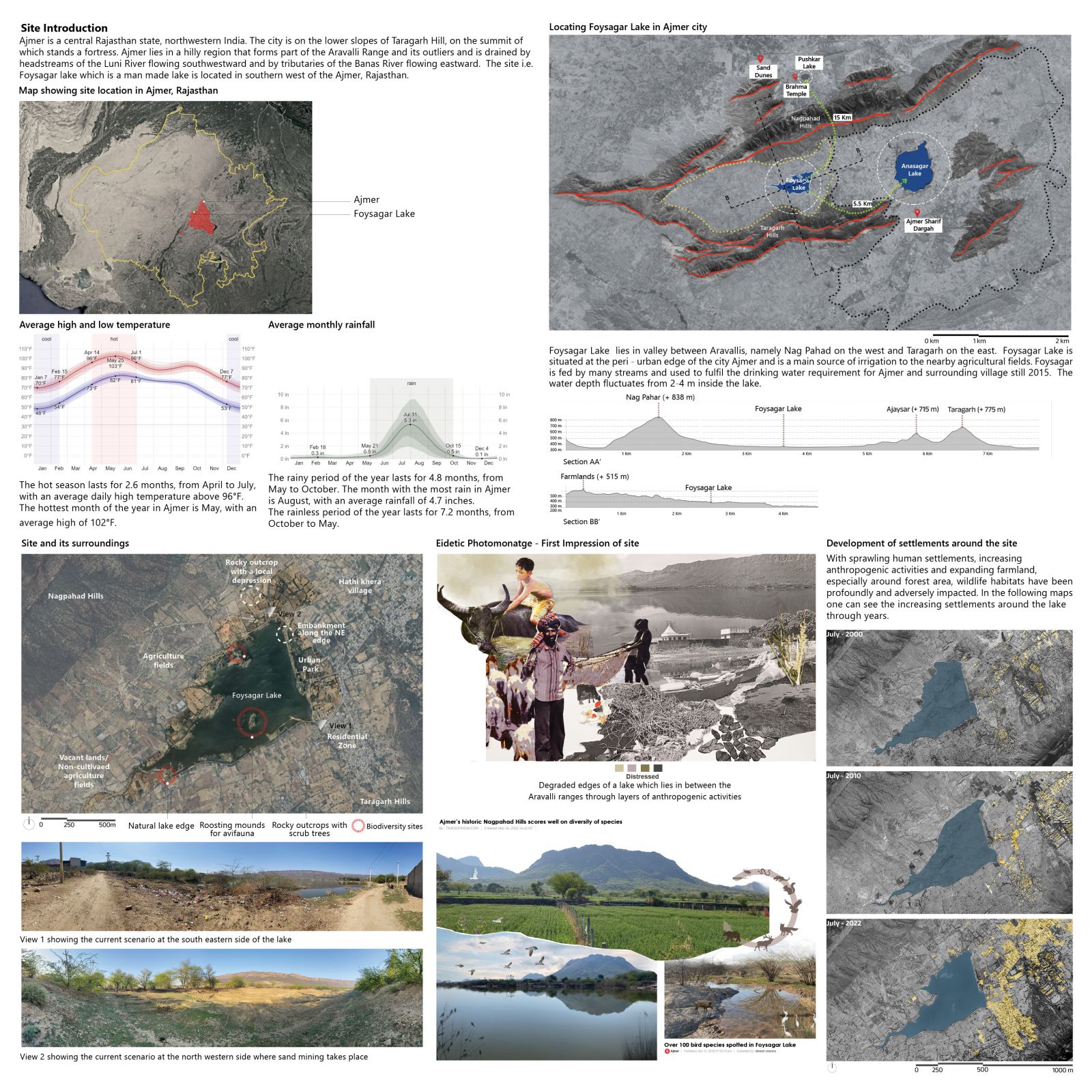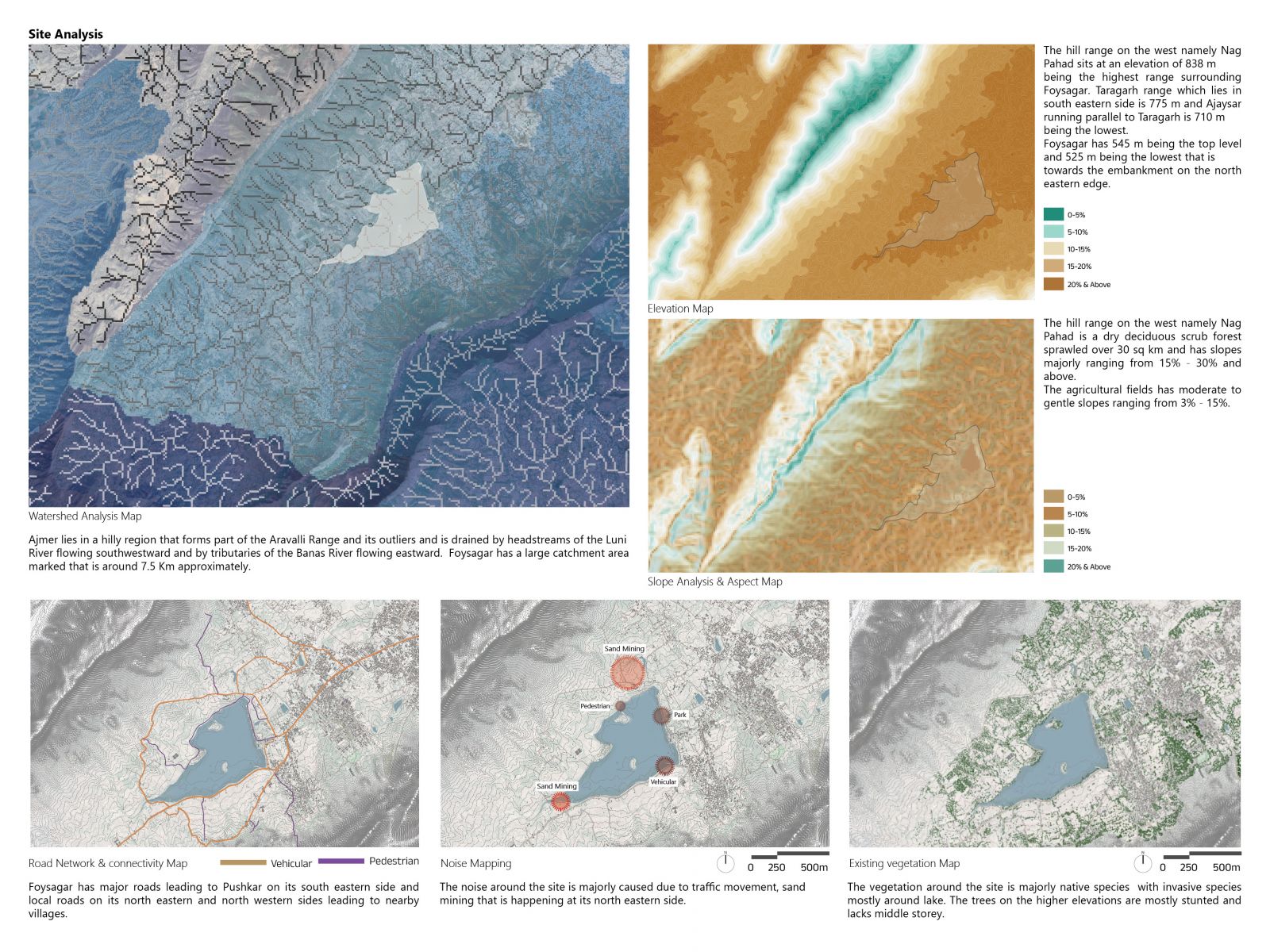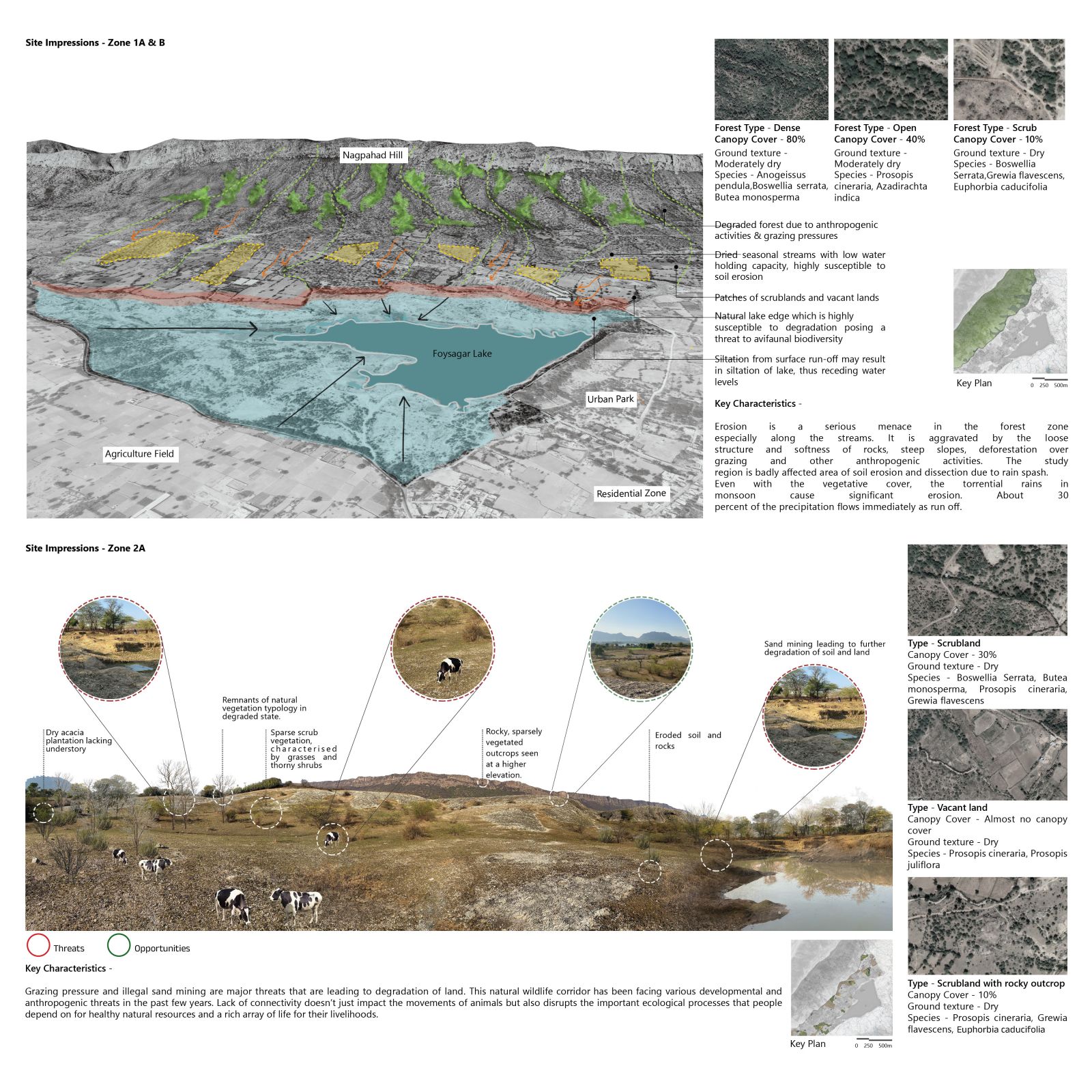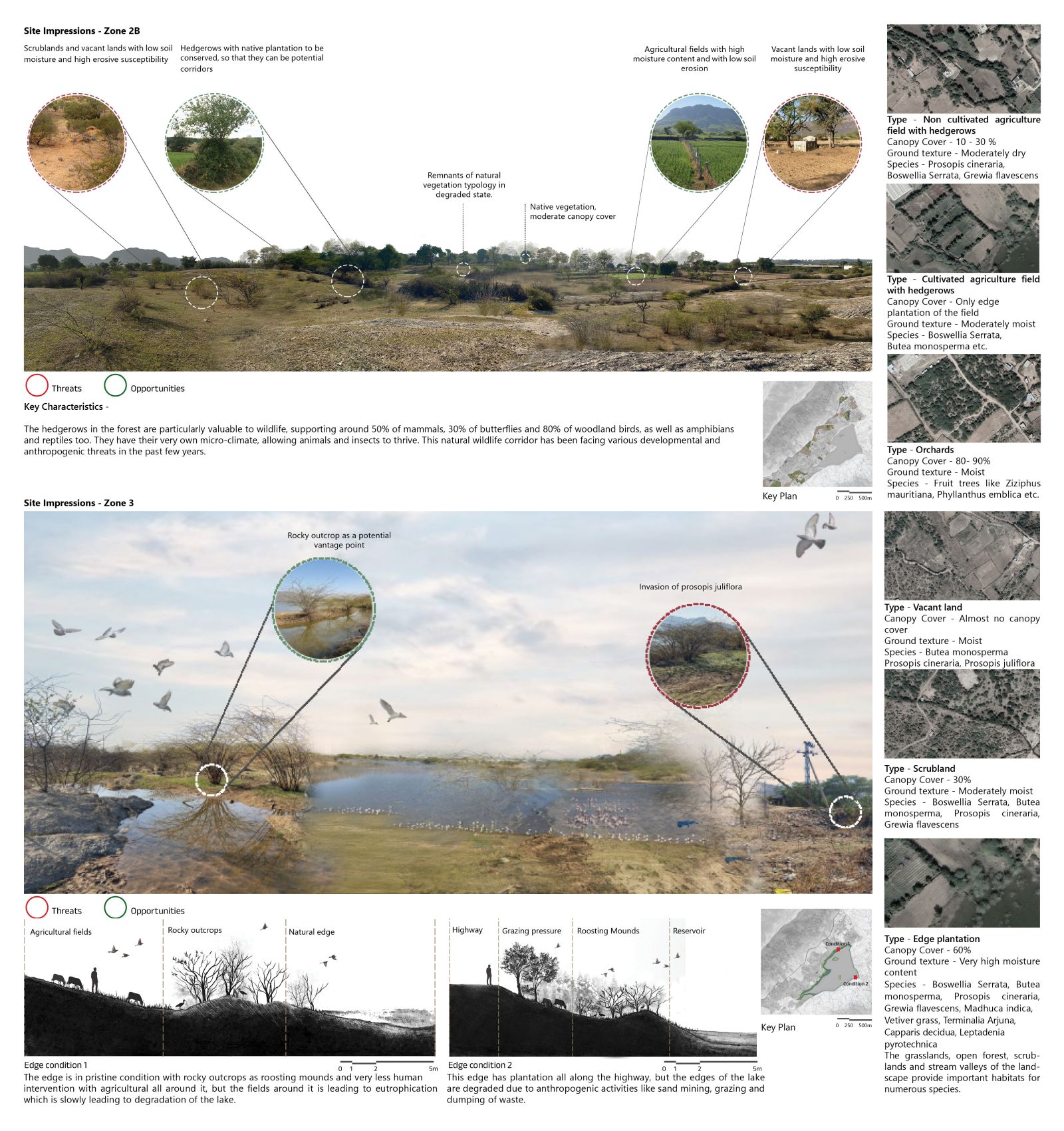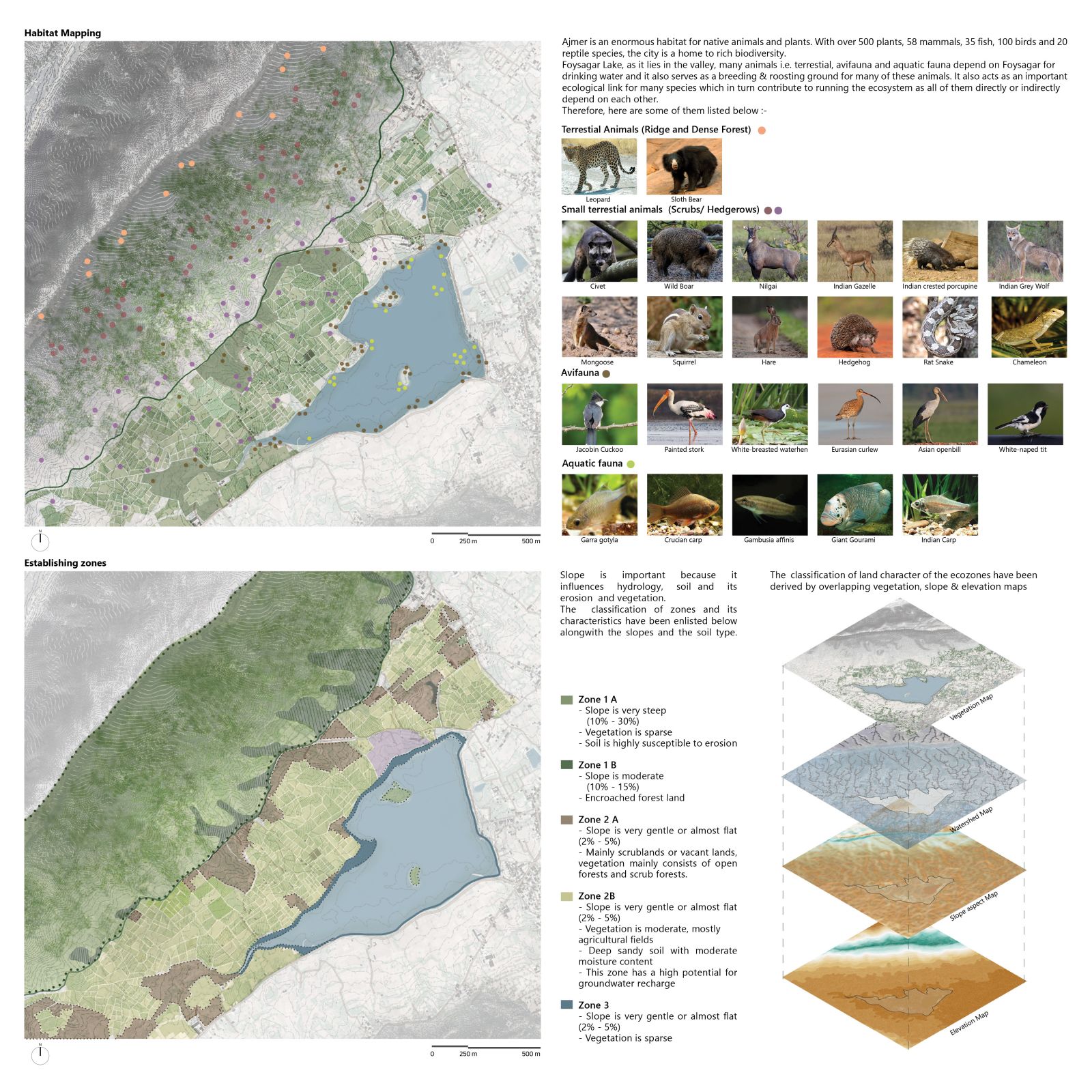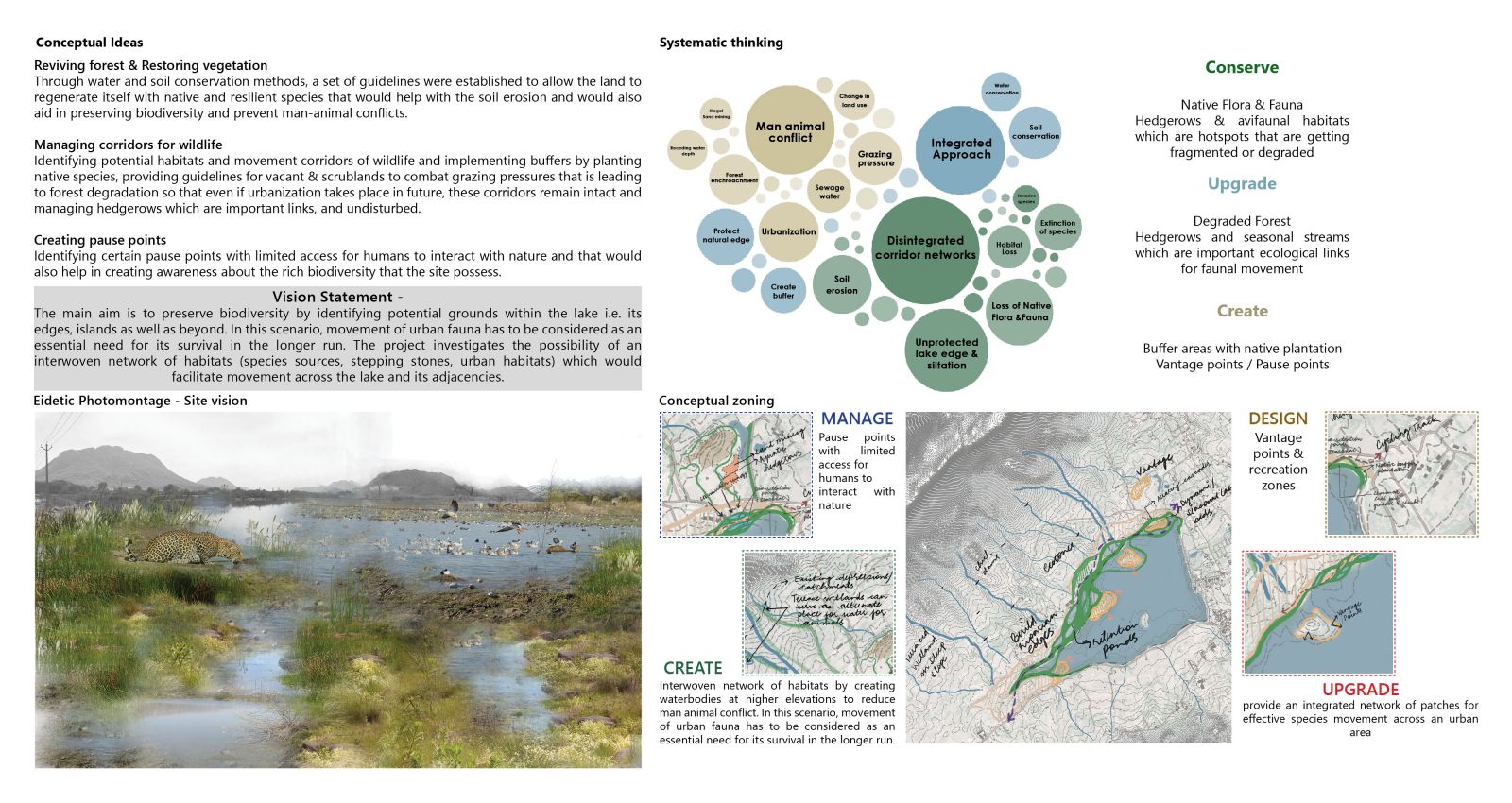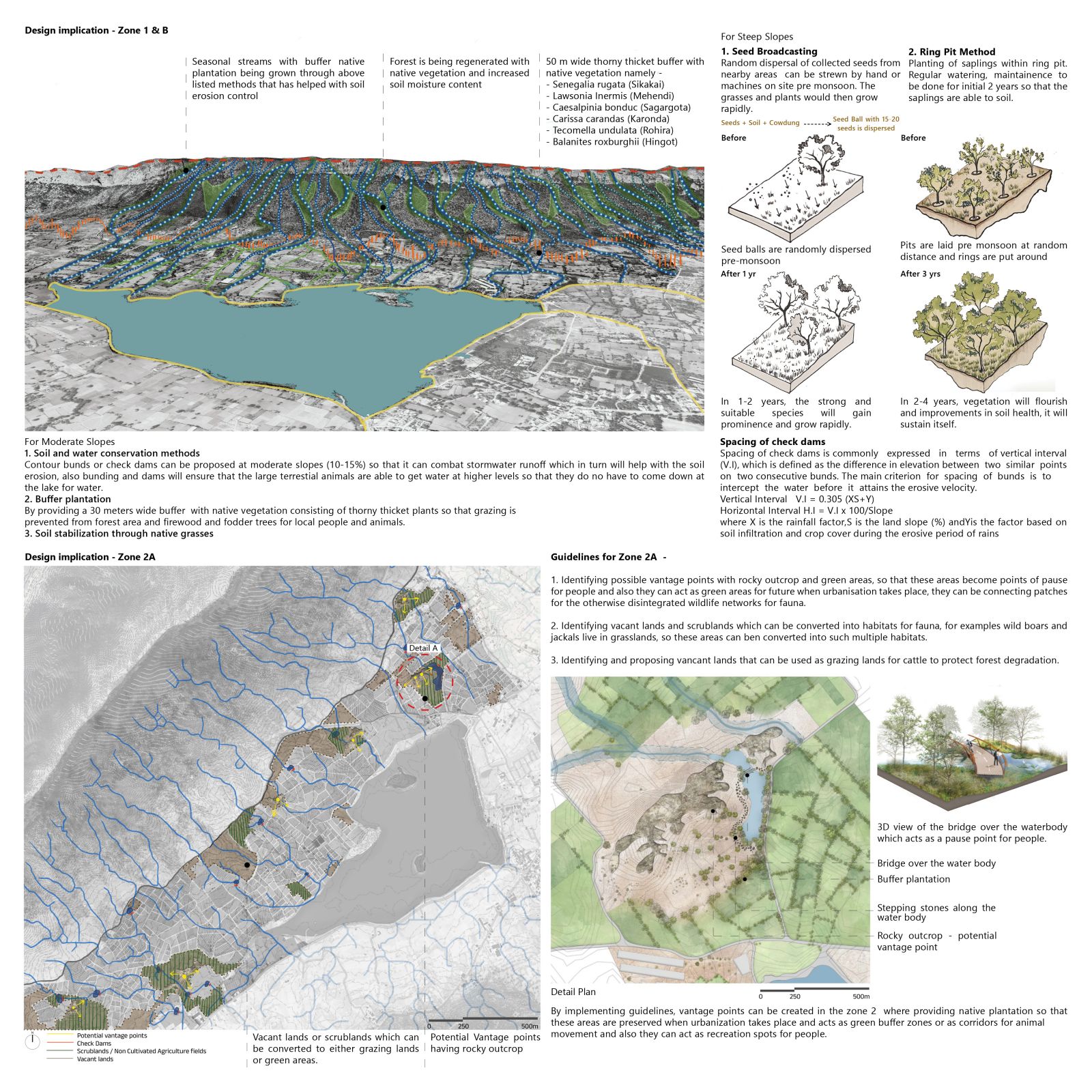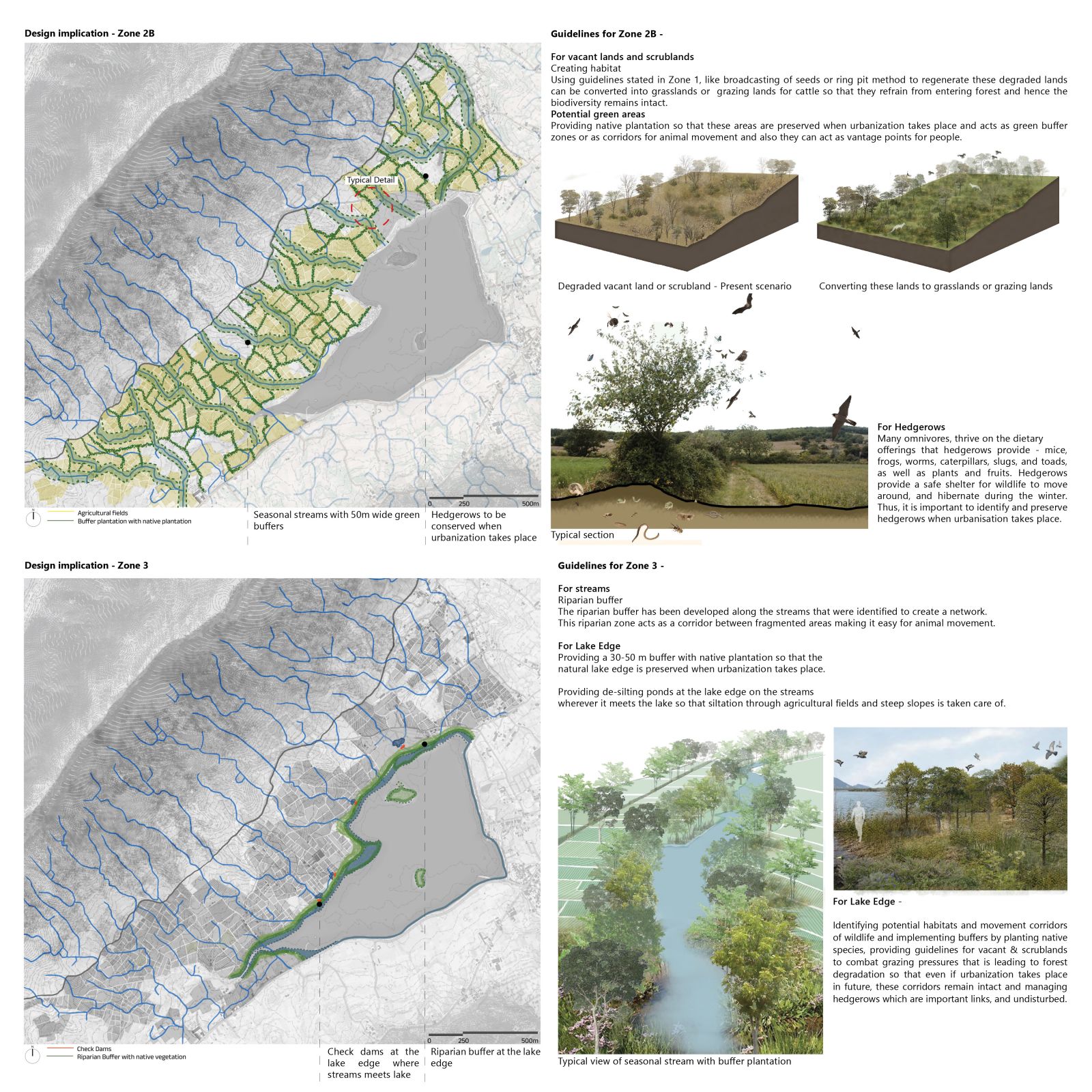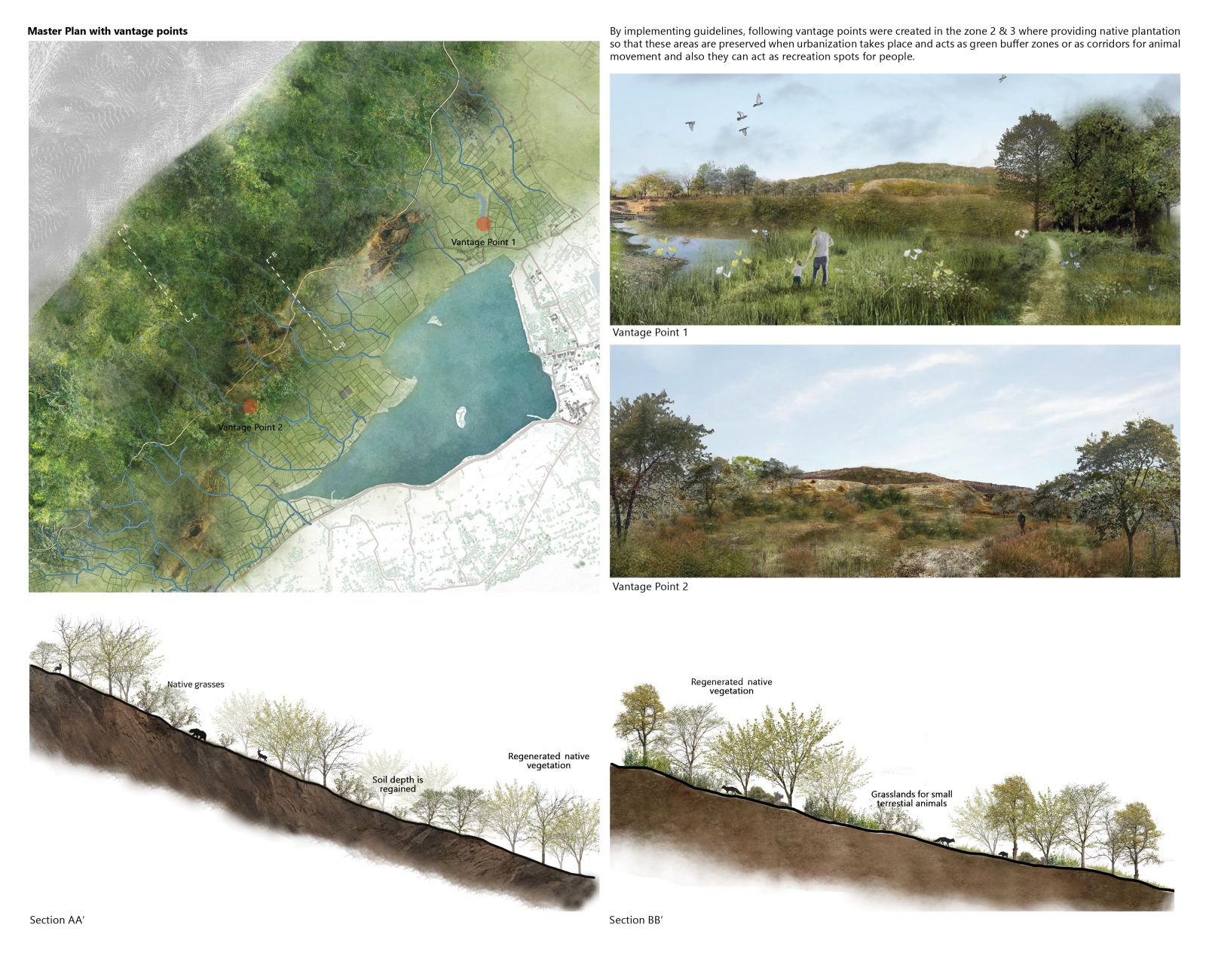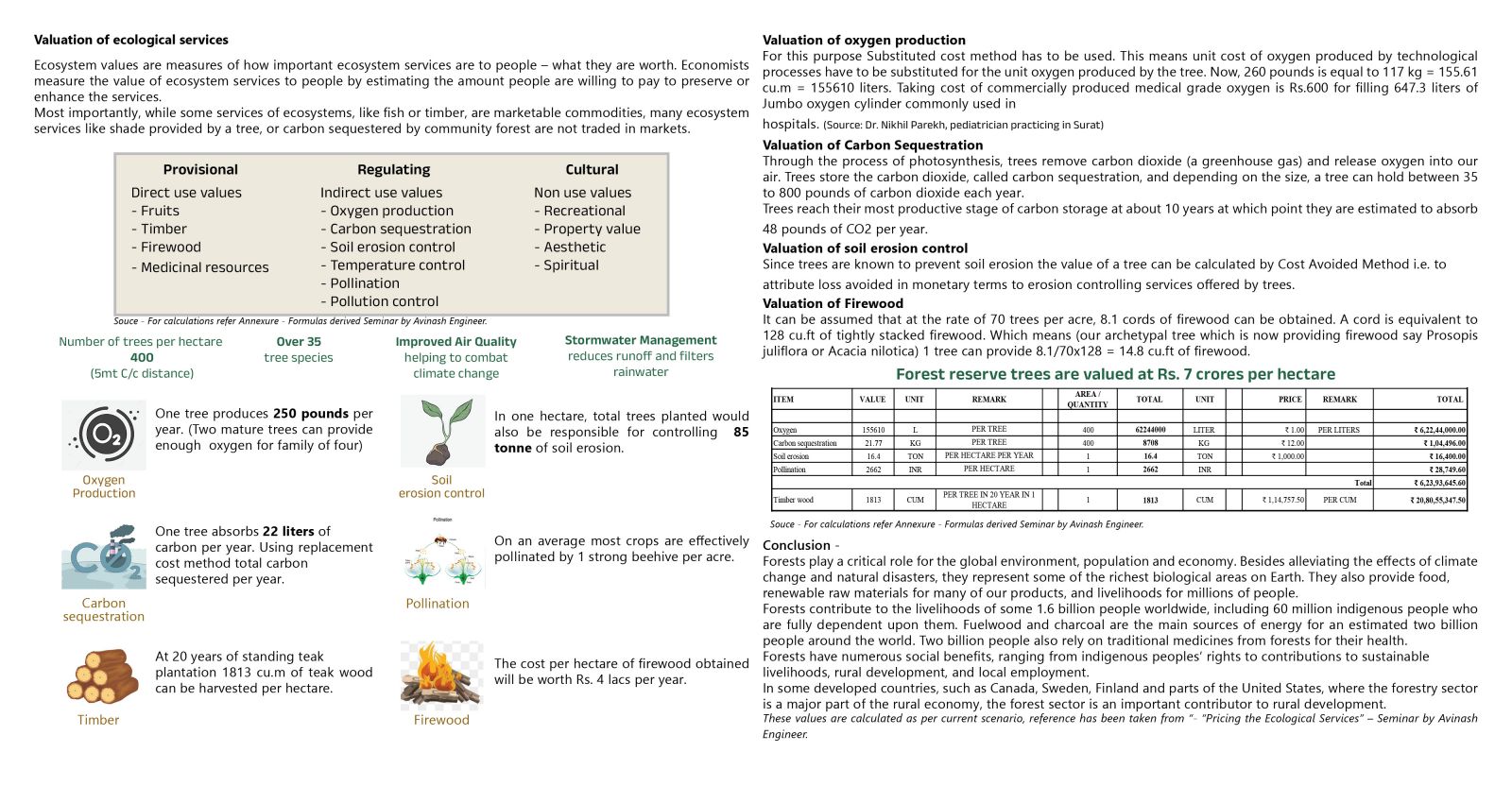- Student GAURI NEVATIA
- Code PLA22116
- Faculty Architecture
- Unit L4 Studio Unit
- Tutor/s Deepa Maheshwari
- TA Anmol Tewari
Urbanization has led to fragmentation of wildlife habitats and corridors, both influencing biodiversity and ecological processes. As cities grow vital habitat is destroyed or fragmented into patches. With sprawling human settlements, increasing anthropogenic activities and expanding farmland, especially around forests, wildlife habitats have been profoundly and adversely impacted. The sanctity of wild habitats lies in their contiguity and the resulting connectivity, but increasing fragmentation of these habitats is causing irrevocable damage to wildlife and the functioning of ecosystems. Foysagar Lake is located in the peri-urban fringe interface, southern west of the Ajmer city. It lies in valley between Aravallis, namely Nag Pahad on the west and Taragarh on the east. Foysagar is fed by many streams and used to fulfil the drinking water requirement for Ajmer and surrounding villages till 2015. As it lies in the valley, many animals such as leopard, Nilgai, and many small terrestrial animals depend on Foysagar for drinking water and it also serves as a breeding & roosting ground for many migratory birds and hence it is quite rich in biodiversity. Due to embankment on its north eastern - southern edges and anthropogenic pressures like agriculture and grazing, the lake lacks natural edges on its two sides leaving behind fragmentation of the natural habitats. In addition, the increasing urbanization rate has led to development of certain roads and highways that cut through these crucial corridors, which lead to unwanted and dangerous human-animal encounters The outcome of this project would be a multi-phased proposal, addressing vegetation, water, soil management and the identification of smaller pockets that still hold high levels of biodiversity, whether they hold invertebrates or smaller animals or charismatic species and connecting them to larger forest patches for long-term conservation goals to ensure movement of animals between the patches to exchange genetic material. It would potentially act as safeguarded corridors for animals, and would take care of the conflicts that is likely to happen in future.
